On June 28, 2024, in Presque Isle, Maine, the inflation of a 90,000-cubic-foot hydrogen balloon began, setting the stage for an ambitious Atlantic crossing. Three seasoned adventurers prepared to make history by flying a hydrogen balloon in an open 5 by 6-foot basket. The crew included two balloon pilots: 67-year-old Sir David Hempleman-Adams, British explorer and balloonist; 63-year-old Bert Padelt, an American balloon manufacturer and pilot; and 73-year-old Dr. Frederik Paulsen, a Swiss explorer, scientist, and entrepreneur.
They were equipped with high-tech communication and tracking devices, but they would fly without the aid of pressurized or floating capsules. Their basic essentials included a camping stove for cooking and winter coats to combat the freezing temperatures.
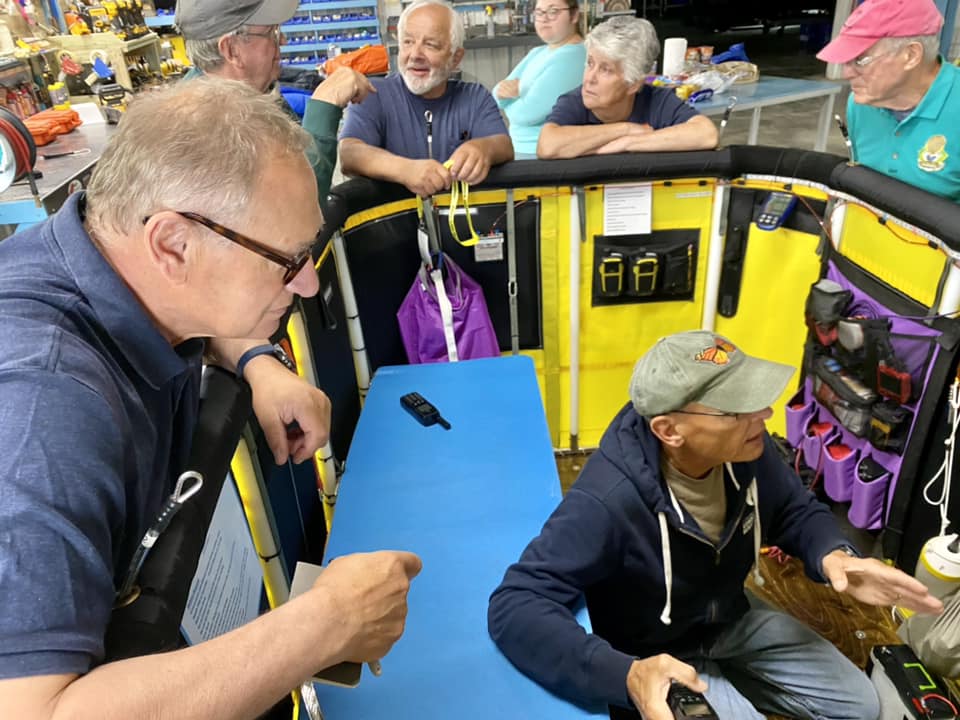
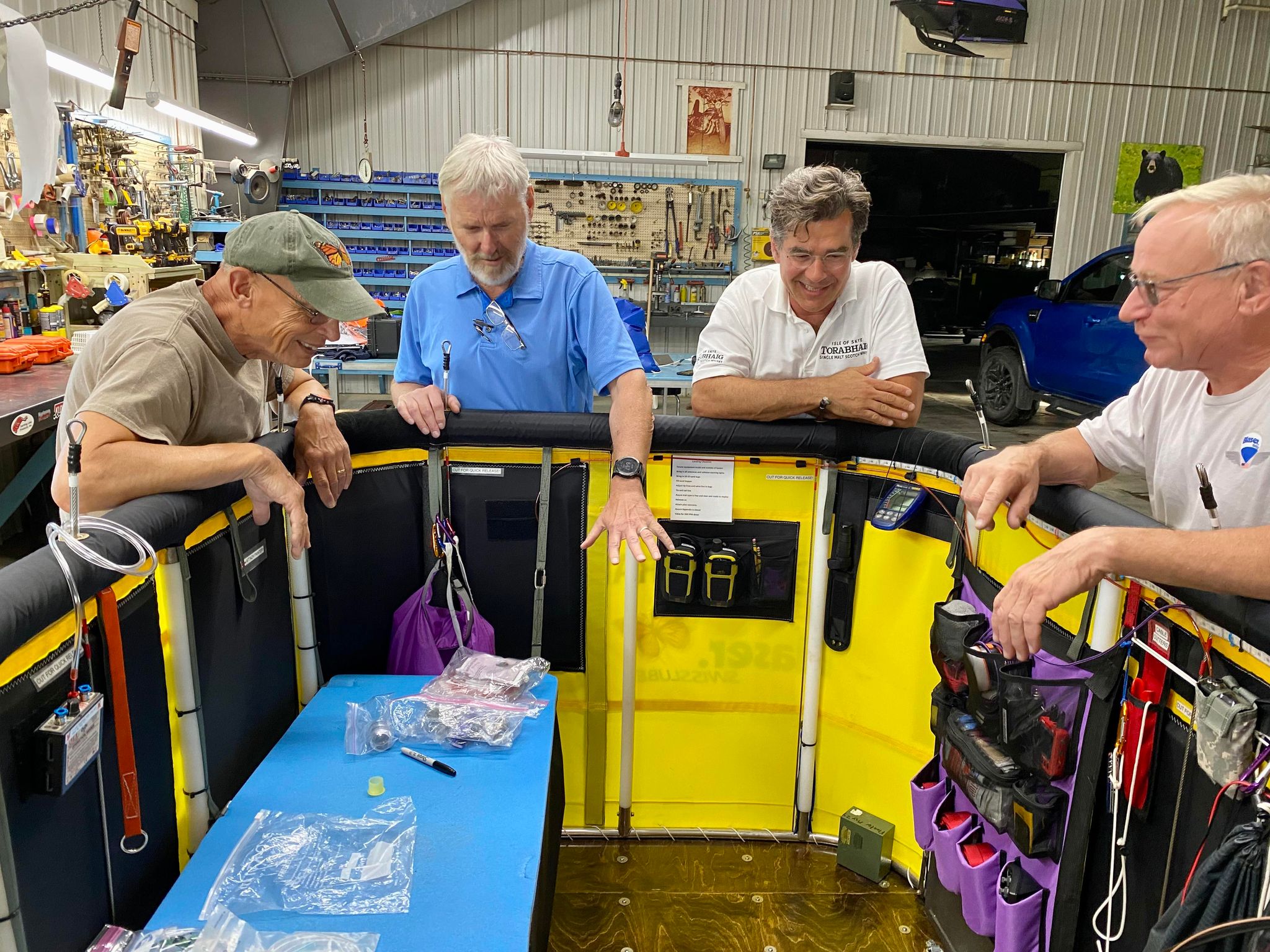
Photo Credit: Paul Cyr
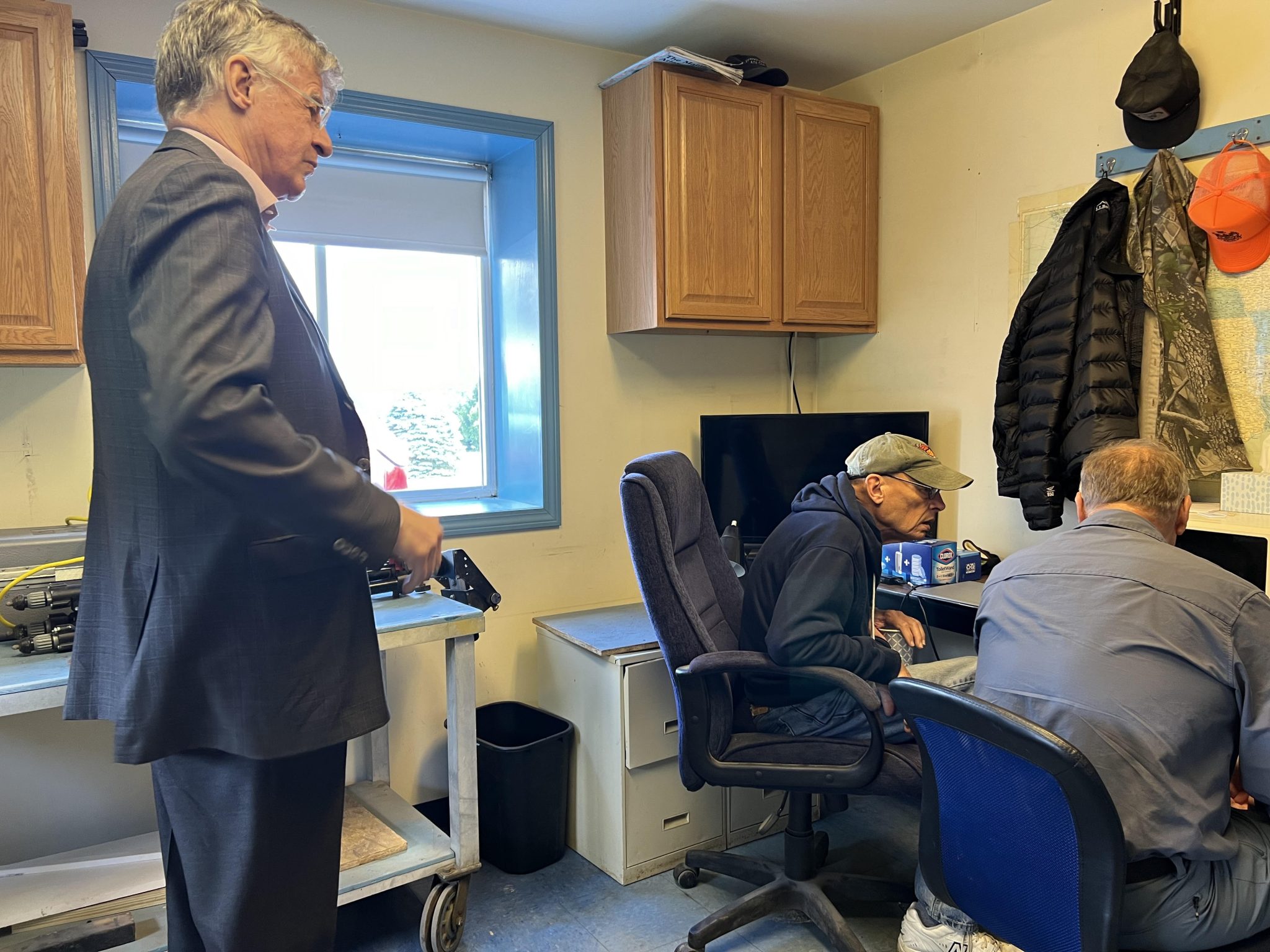
Bert Padelt chose Presque Isle as the launch site due to its northern location with favorable winds to Europe and for its historical significance as the launch site for Double Eagle II’s transatlantic balloon flight. Additionally, being nearly 200 miles inland allows pilots to assess the balloon’s performance before advancing over the Atlantic.
The launch preparations were exhilarating, and Bert was overwhelmed with emotions. “My past experiences on many projects of this magnitude did not prepare me for this. I used to be the one inflating the balloon; now, I was in bed, struggling to calm my mind for some sleep,” said Bert.
From his bedroom window, Bert watched the launch site. Unable to sleep, he left the window open to hear the hydrogen inflating the balloon. He woke two hours later to see the balloon standing tall. Still too excited to sleep, he followed the launch preparations on Facebook, where spectators shared videos from the site.
Later, Bert walked to the field and was filled with pride at the sight of the balloon he and his wife Joanie had built, now filled to 80 percent capacity and glowing under the floodlights. The smiling faces of his dedicated team, comprising expert balloon pilots and locals organized by Paul Cyr for parking and inflation, brought him great satisfaction.
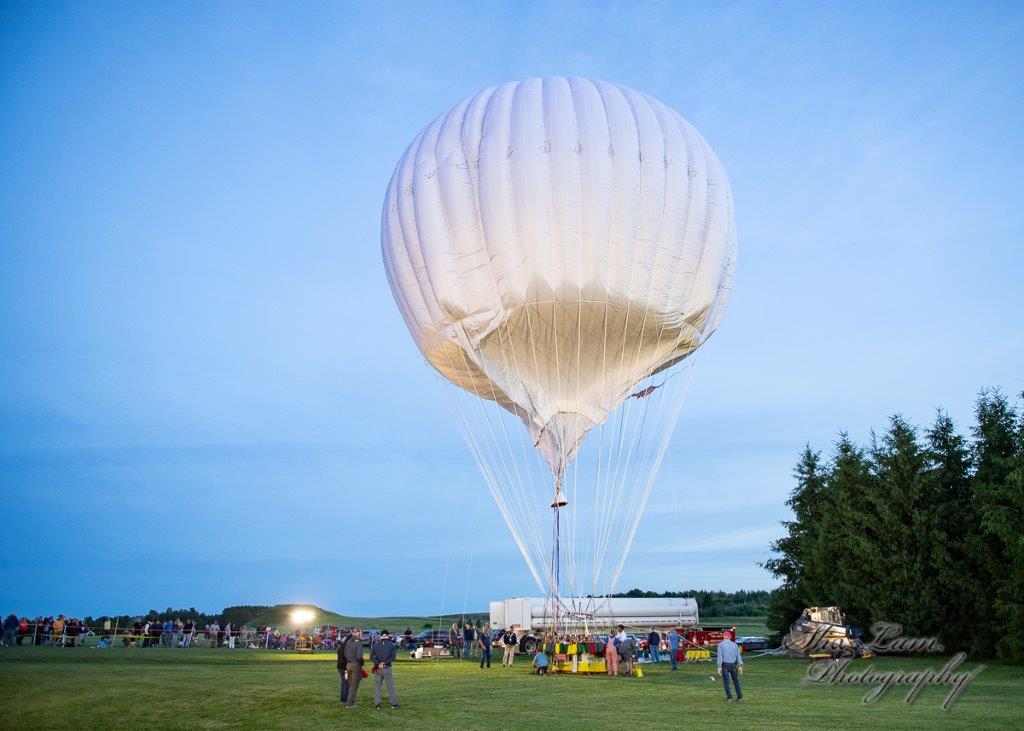
Photo Credit: Paul Cyr
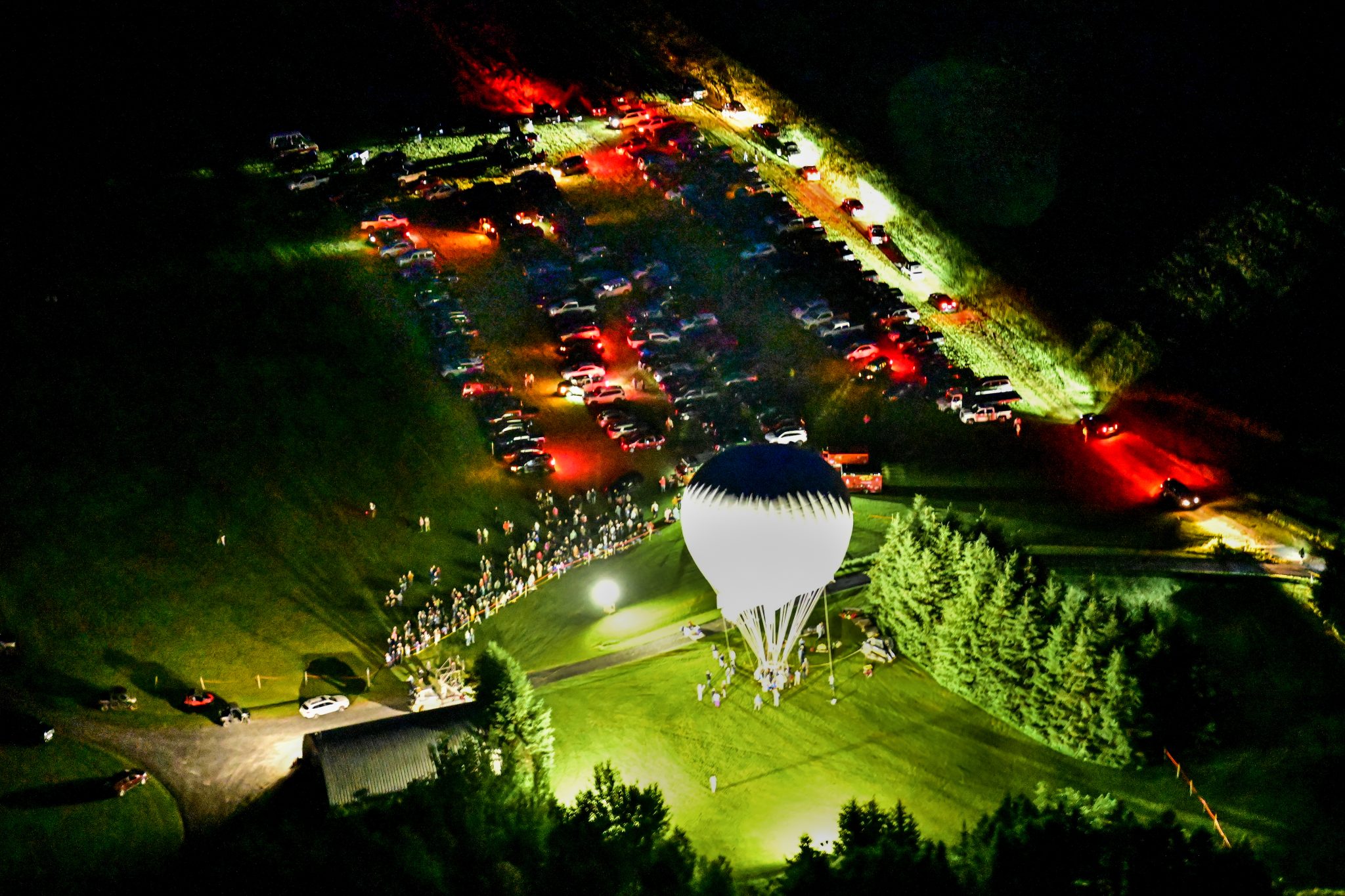
Final Preparations and Launch
They would fly under 20,000 feet, typically considered a low to mid-level flight. “That is the classiest way to fly a balloon across the Atlantic. You are in the elements, not flying above the weather, but in it,” said Bert Padelt in an interview with Sitara Maruf. Ideal weather for such a flight is typically in early fall or summer. So, they decided to try the flight in June. “Our thoughts, along with the meteorologists, were that the water temperatures wouldn’t be warming up yet, reducing the chance of convective activity,” explained Bert.
Wim De Troyer served as the meteorologist. In addition, Bert also consulted with his good friend and U.S. meteorologist Don Day. The briefing on Thursday evening showed promising flight prospects for a Friday evening launch, with no thunderstorms and a perfect forecast confirmed by both meteorologists.
On Friday morning, every weather track looked favorable for their 10 PM launch to Europe. The plan was to ascend to 6,000 to 8,000 feet on the first day and then go up 2,000 feet per day, aiming to land in France or northern Spain in four days. “That was ideal for the way the balloon is designed,” said Bert. The prediction was that they would enter Europe at 17,000 feet with an average speed of 25 miles per hour.
David tried to get some sleep. “I was excited and anxious, so it didn’t work. We must have had 50 people in the team working with us. Very humbling,” said David, who had earlier pulled Bert away from the crowd and urged him to rest before the long flight ahead.
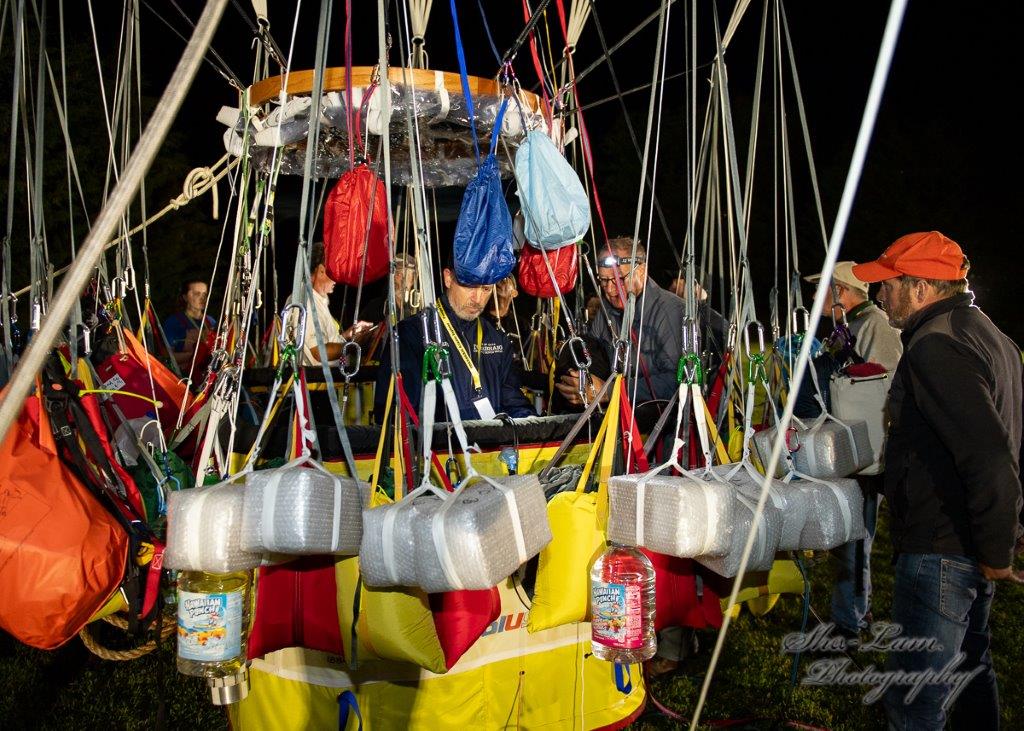
David Hempleman-Adams wearing a headlamp, 28 June 2024. Photo credit: Paul Cyr.
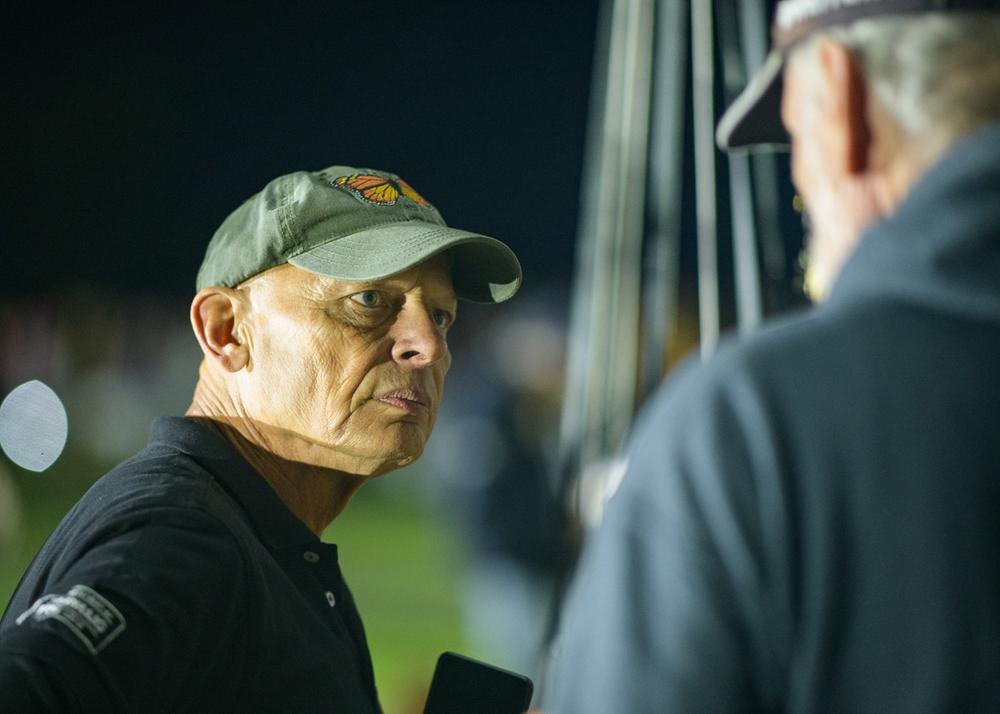
Photo credit: Paul Cyr
Just before launch came the unexpected weather update from Wim. “Instead of climbing to 6,000 to 8,000 feet, he now wanted 8,000 to 10,000 feet, meaning we would have to lose more ballast before launch,” said David. “So right there, we’re knocking a day off the balloon’s duration,” added Bert.
Before launch, a gas balloon is weighed off so that on launch it rises to a specific height, reaching equilibrium between the weight of the balloon, the volume of the gas giving the lift, and the air pressure at a specific altitude.
During the final preparations, Bert sent out a thank you message to all their supporters. “The dream is about to take a major step. I am excited!” he said. John Piper recited the balloonist’s prayer, and they took off in their balloon N56US at 02:35 UTC (local time10:35 PM). “The balloon rose majestically into the night sky; well over a thousand people on the ground were clapping and cheering,” said Clive Bailey, from the Flight Control Center in Bristol.
Joanie looked visibly shaken, and Ros Smith stood speechless beside her as the balloon ascended, eventually resembling a flashing star in the sky.
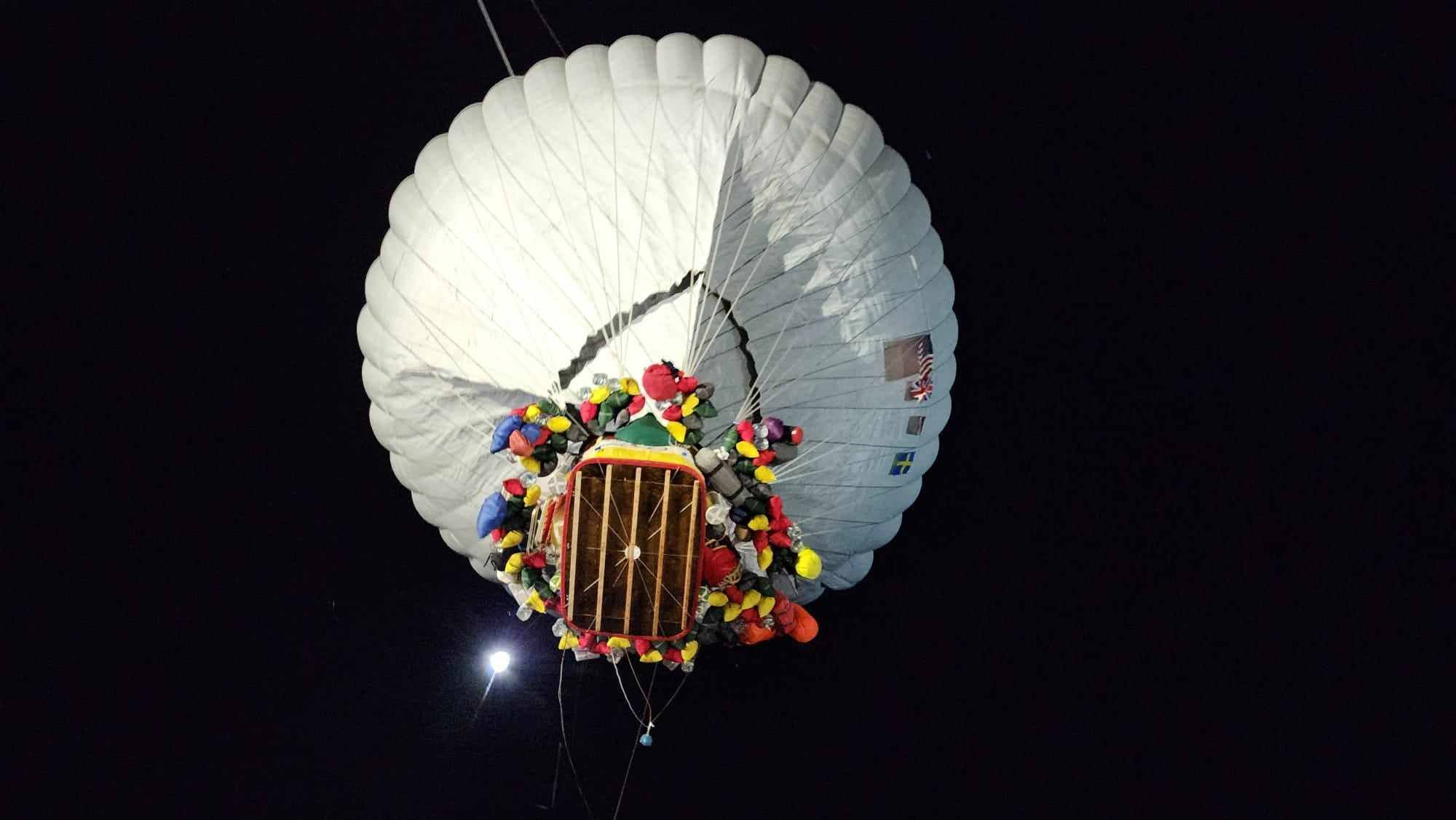
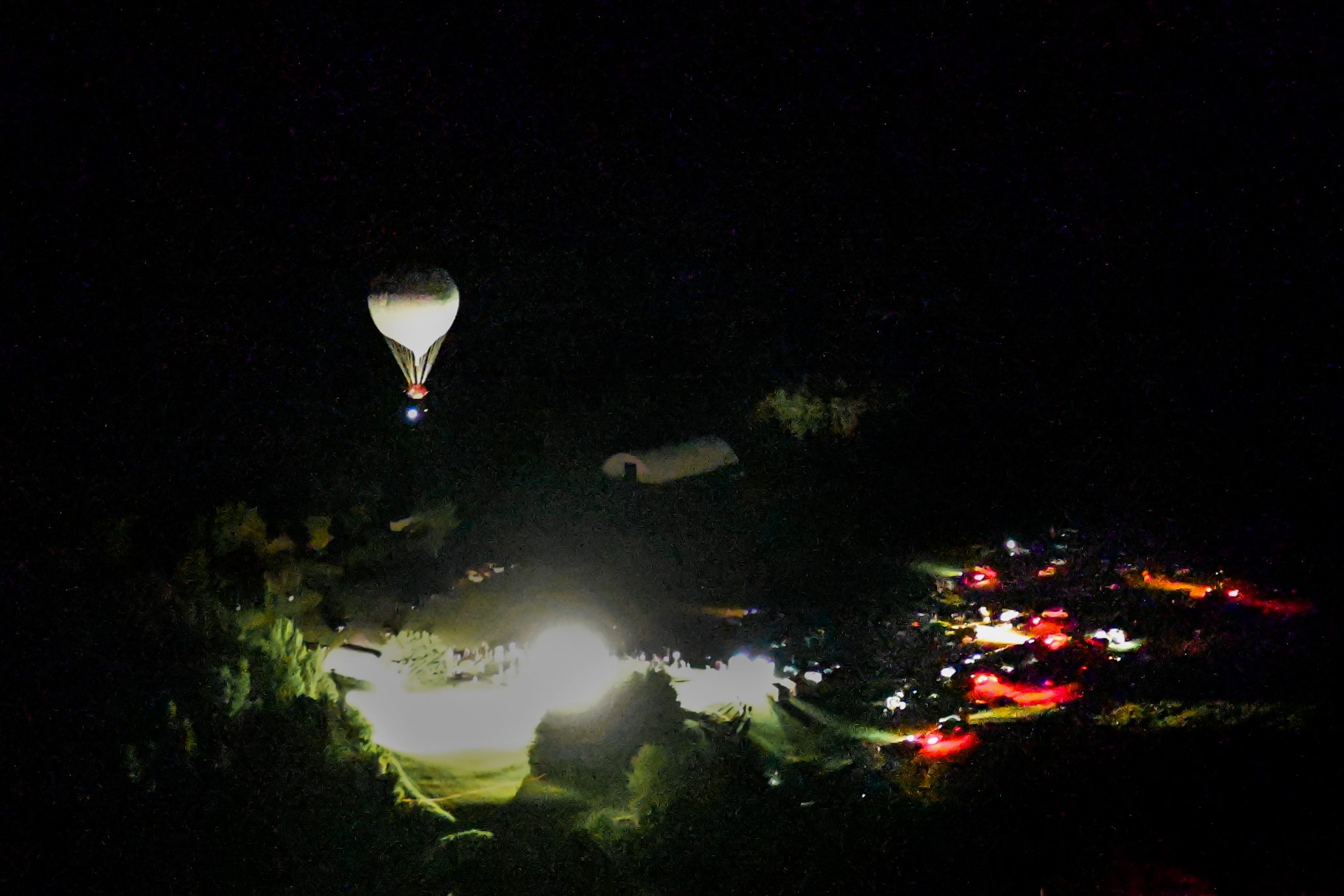
Photo Credit: Paul Cyr
The first 24 hours of a gas balloon flight are crucial, especially with an ocean ahead. Kevin Stass from Mission Control coordinated with aviation authorities, air traffic control, and search and rescue centers to ensure a safe and clear corridor for the balloon’s journey. “Although any rescue required would be automatically triggered by the activation of the Personal Locator Beacons (PLBs) carried by the crew, it is important to give the SAR units as much information as possible before a (hopefully) unlikely event,” Kevin noted.
The balloon was equipped with sophisticated tracking and communication devices. “We have two Yellow Bricks that will give position and altitude reports at intervals of anywhere from 10 seconds to 2 hours, an inReach for position and text messages, and two independent satellite phones for communication with our control center,” said David. They also carried an HF radio, similar to the Double Eagle II balloon team.
The Flight
Bert flew the balloon while David handled the radio communication with Presque Isle and Boston ATC. “Gas balloon N56US,” he called out. “Hello, we have been expecting you,” came the reply, wishing them good luck. For the first few hours, the balloon was settling in, going up and down, but it flew beautifully, and Bert was very happy with its performance. Frederik went to sleep right away.
As they climbed, it got colder. Then came another unexpected weather update from Clive in the control room. “Once we were in the air, 10,000 feet wasn’t giving Wim the direction he wanted. He needed a 90-degree or 80-degree heading, but ours was closer to 75 degrees. His concern was that we would be north of Gander, missing the tracks needed to reach France and heading into a storm in Scotland with poor landing conditions. So, we had to go higher. I decided to wait until sunrise to see if we would get any superheating.”
To stay south of Gander, they would need to climb to 12,000 feet or higher by jettisoning valuable ballast. “The duration of a flight depends on the amount of ballast you have remaining, so it’s important to conserve it, especially early in the flight,” reflected David.
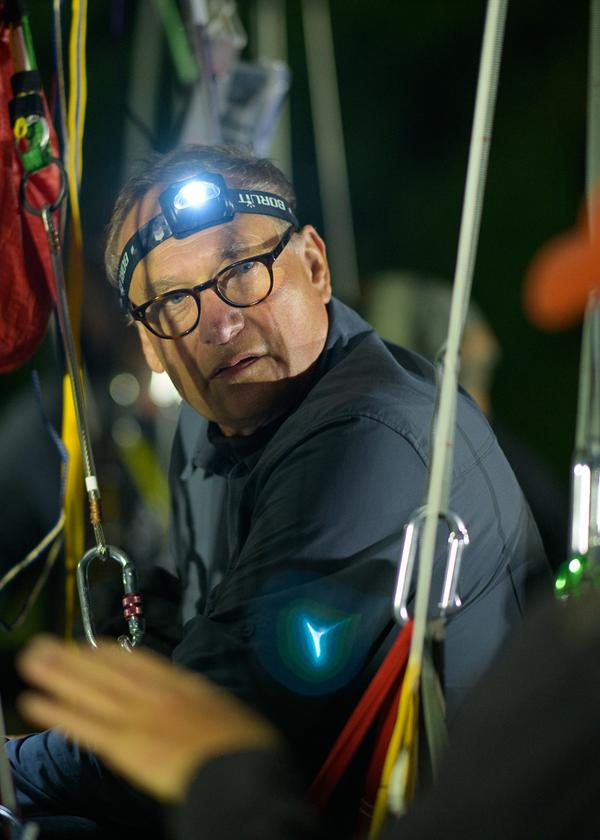
Photo courtesy: Torabhaig Single Malt Whisky
Once they entered Canada, David took a three-hour nap. It was decided that Bert would fly the balloon until sunrise to see how it was performing. Their communication system Starlink performed flawlessly and provided clear WhatsApp video calls.
At sunrise, the sky was overcast, a condition forecasted to persist for two days, preventing any superheating from sunlight. “To achieve the desired heading, Wim proposed climbing to altitudes of 12,000, then 13,000, and 14,000 feet the next day,” Bert noted. Even at these altitudes over the Gulf of St. Lawrence, there was no guarantee of finding the 90-degrees heading. “The frustrations on flights like these may come in the middle or end of the flight, but not within the first six to 24 hours. It’s expected that the tail end of the flight is not going to be what it looked like when you took off, but the first 12 to 24 hours should go as forecast. So early in the flight, you don’t expect to make dramatic changes and sacrifice ballast,” explained Bert.
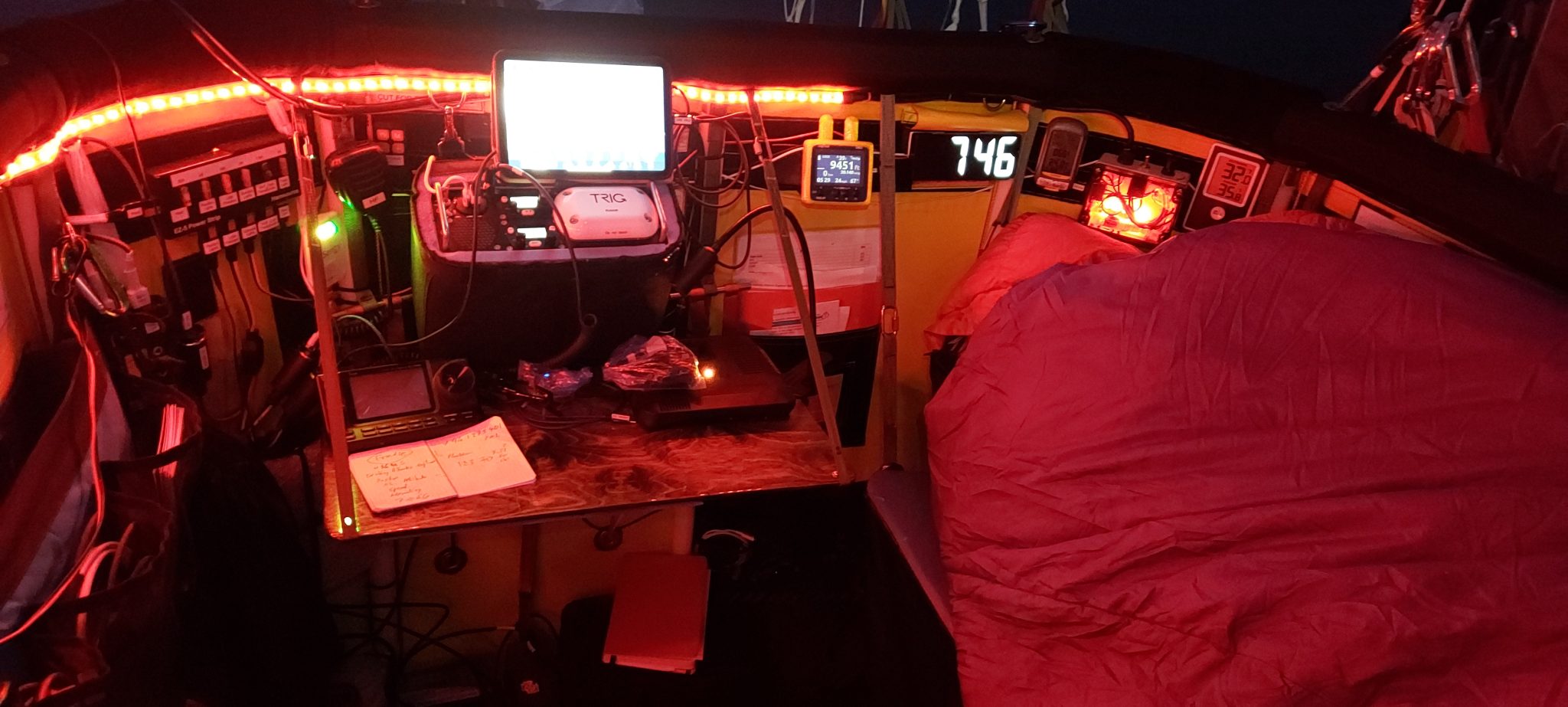
What if they had to make many such maneuvers across the Atlantic? Bert quickly did the math. “If we didn’t need more maneuvering, we’d have about 10 bags left entering Europe after the last sunset ballasting. That would be enough to land the balloon. But what if we had another forced climb? A 2,000-foot climb would use those 10 bags. For estimating ballast at the end of the flight, you consider the worst-case scenario, so I was thinking conservatively. It would be very close, and we might not have enough ballast,” he thought.
The Decision to Land
Just before David woke up, Bert had spoken with Clive, who emphasized the need to climb higher. However, Bert decided not to jettison any more ballast, maintaining the balloon’s altitude between 9,000 and 10,000 feet. The sun appeared for five minutes before disappearing behind thick clouds. With an overcast sky forecasted for the next two days and the coast of the Gulf of St. Lawrence rapidly approaching, they concluded that landing the balloon quickly was the right decision.
David nearly cried at the thought of his friend Bert giving up his dream of crossing the Atlantic. Drawing on his 40 years of ballooning experience, Bert was confident that a good decision for a pilot involves safely landing the crew, passengers (especially Frederik, who weighed heavily on his mind), and the aircraft.
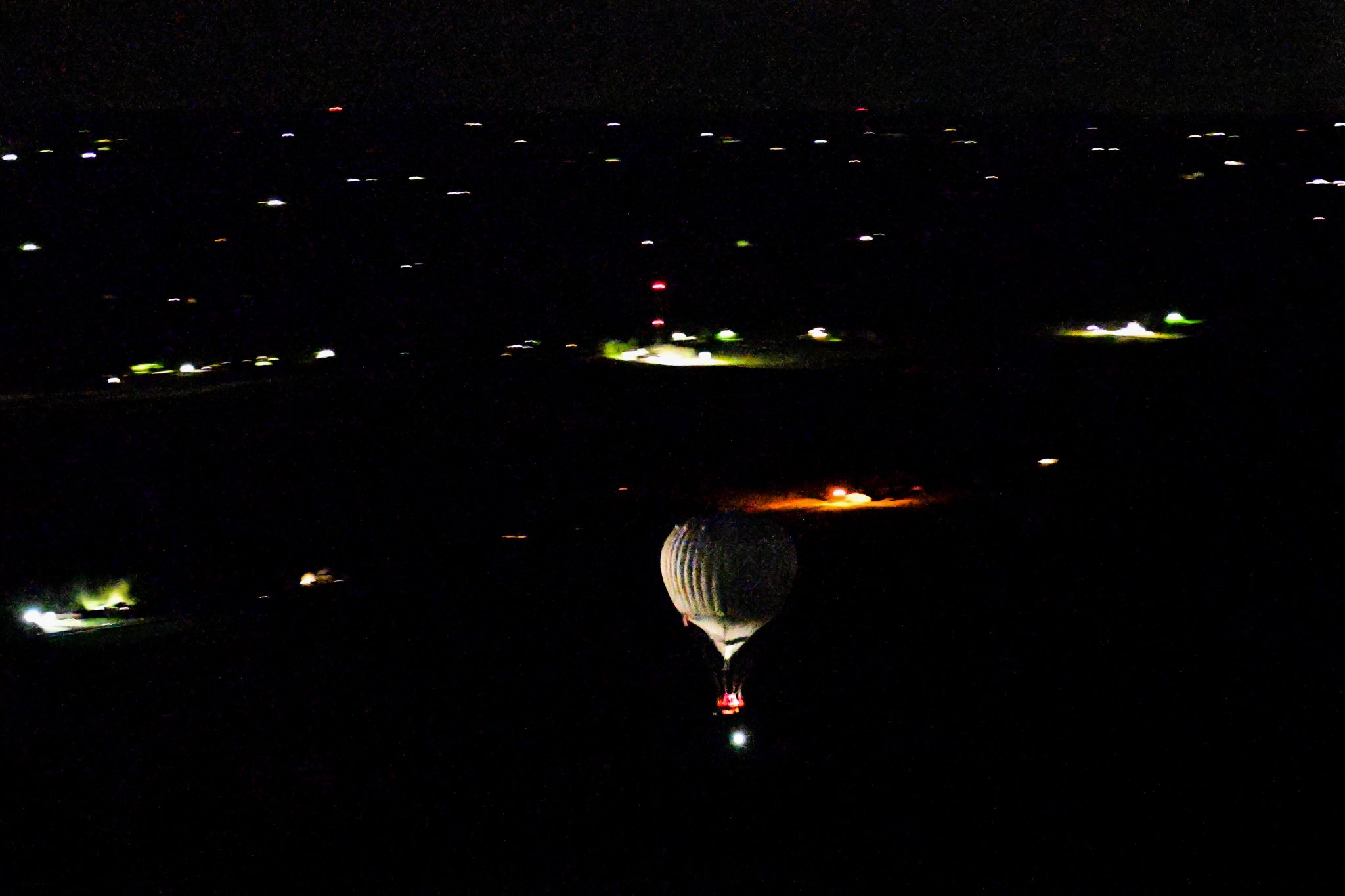
After flying 125 nautical miles, he began a steep descent, looking for a safe landing spot. The area lacked civilization. “From 10,000 feet, we had little time to get down before reaching the coast. I piloted the largest gas balloon I’ve ever flown, descending at 1,200 feet per minute, leveled it out, and landed on a dirt road, with trees on either side. The balloon and all of the equipment came back intact,” said Bert. It was 09:41 UTC (6:41 AM local time) when they landed at Christies Landing, in New Brunswick, Canada.
They kept the balloon standing for as long as possible, then lightened the load before moving it to an open area by a cabin. “We started removing equipment while I vented hydrogen to keep the balloon heavy. After two or three hours, it got windy, so I pulled the deflation port and brought the balloon down. It was a good decision, as the wind reached 25 knots while we waited for the crew to arrive.
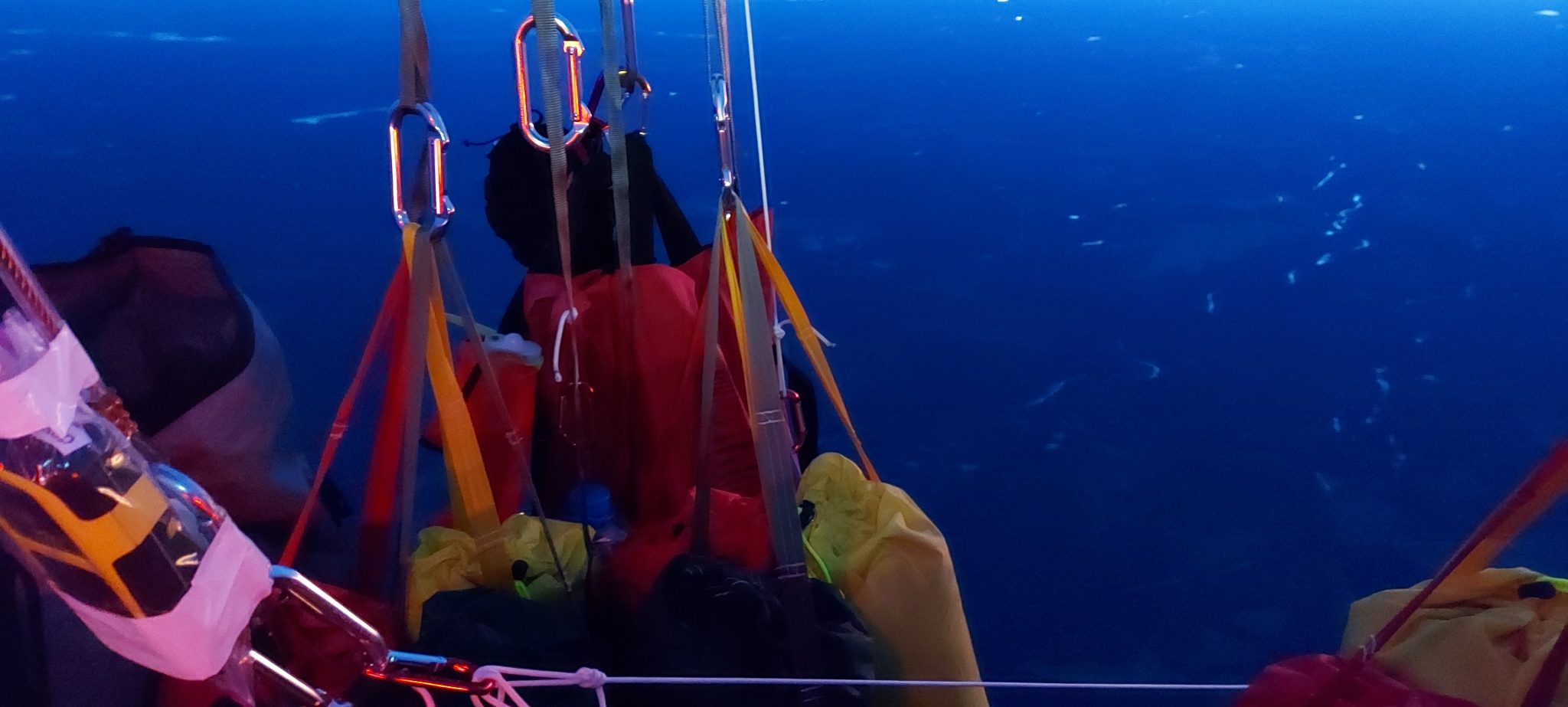
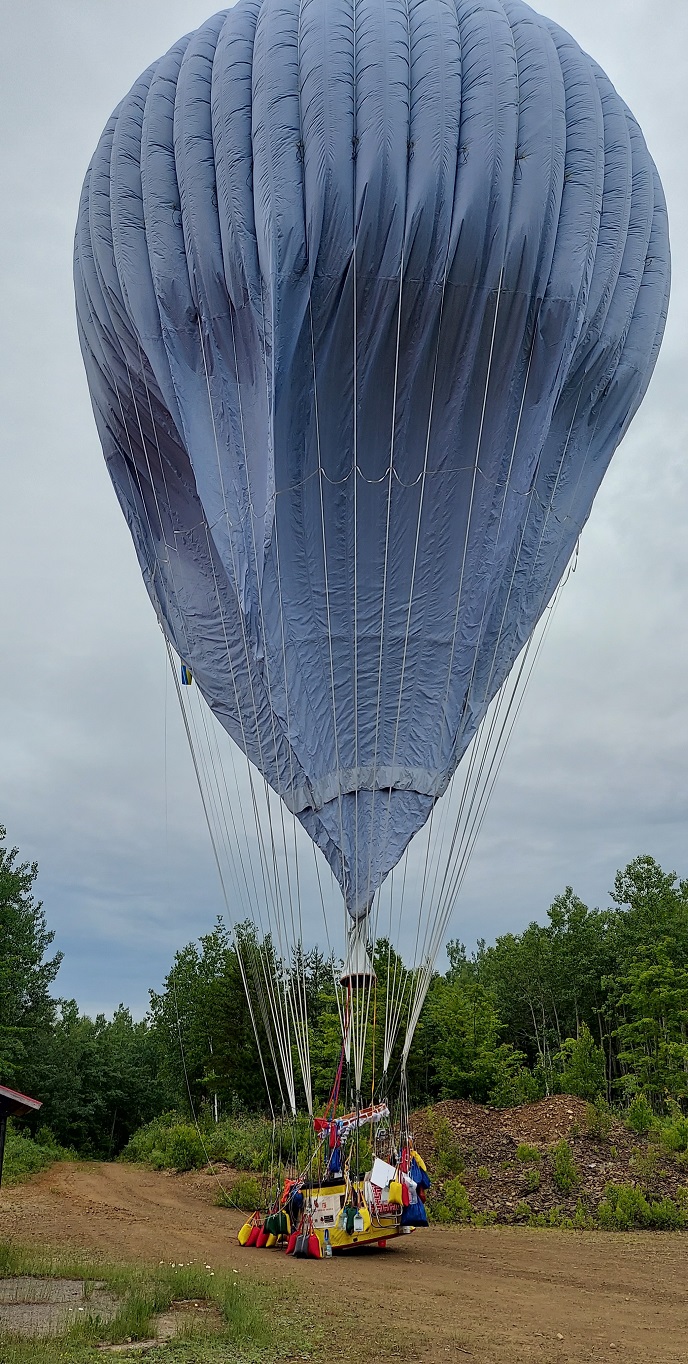
The Retrieval
The retrieval crew in Presque Isle had gone to bed at 2 AM. Around 5 AM, Ros received a call from Clive: “Hello darling, they’re landing. The weather’s changed, and they won’t have enough ballast.” Joanie and others quickly arranged cars and collected the trailer from Paul’s, setting out on a four-hour drive to retrieve the crew and the balloon.
The balloon had come down in a remote area with only trees, shrubs, and logging tracks. “It felt like we were lost in a complex maze, the center always close but never in reach,” said Ros. Many tracks were blocked by water or impassable, even though Jason Fischer was using satellite images from Google Maps to guide them.
When they found the crew, they had a brew on, the balloon laid out, sandbags emptied, and the kit organized, ready to pack. They had been on the ground for six hours. “They were exactly the same people that we had waved off at the launch site and treated both the excitement of launch and the disappointment of an early landing with complete equanimity. Despite the sleeplessness and disappointment, they were still calm, charming, warm, solid men,” said Ros.
Reflection and Gratitude
According to Jason, Bert Padelt’s aircraft had performed flawlessly; the teams, navigation, and communication all worked as designed.
Bert Padelt had envisioned doing such a flight “without being under the microscope,” but since they had sponsorship, this was not the case. The adventure’s expenses were sponsored by Torabhaig Single Malt Whisky, owned by Dr. Frederik Paulsen. However, everyone involved participated voluntarily without any payment. “Having a sponsor means the world is watching your every move. I was disappointed to come back after all the exposure. I was also disappointed for the people of Presque Isle, who were so supportive and came to express their gratitude. Many of them were there when the Double Eagle II took off, and I was giving them back a memory,” said Bert.
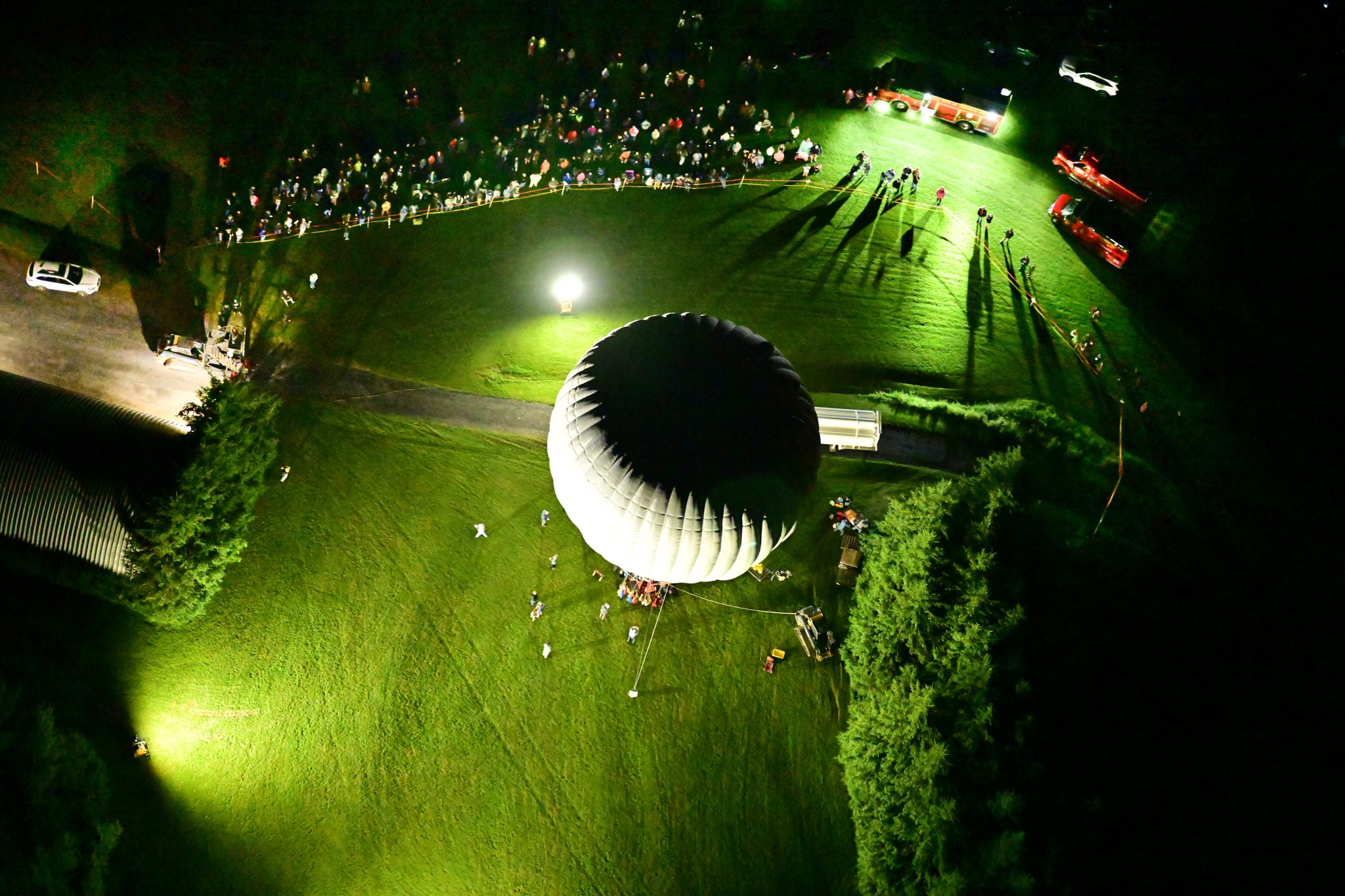
Looking back, Bert mentioned he wouldn’t have done anything differently in terms of preparation or execution, except for minor adjustments like fewer people on the inflation team, or the way some equipment was placed.
David, who has flown solo over the Atlantic Ocean twice in an open basket, says he owes his successes to Bert Padelt’s expertise and involvement in his flights. “I have been involved with several Atlantic flights; none have been so well organized. None, on takeoff, had such a good forecast, and on not one did the forecast become so unstable and change so quickly. The weather has been so cruel,” said David.
Did they encounter an “inversion,” where a warmer air layer above cooler air causes the balloon to lose altitude? Although Wim had mentioned an inversion above them, Bert was not convinced the balloon was being affected by this inversion and did not feel the balloon was using additional ballast.
Bert agrees that the weather has been fluctuating more nowadays than it was in the 1970s or 80s. The crew had consulted top weather experts who used advanced technology, including powerful computers and satellite data from across the North Atlantic. “When I was involved with Steve Fossett’s around-the-world flight, we would occasionally have to cancel the first identified good weather window and wait for the next one. However, four days out, everything would line up, giving us confidence, and it did not suddenly change. This was true for all seven of his attempts that I was involved in…only one instance there was a thunderstorm. This year could be a fluke, I don’t know. Last year, we had all the hurricanes that presented a problem in September, which is why we decided to go in June.” he said.

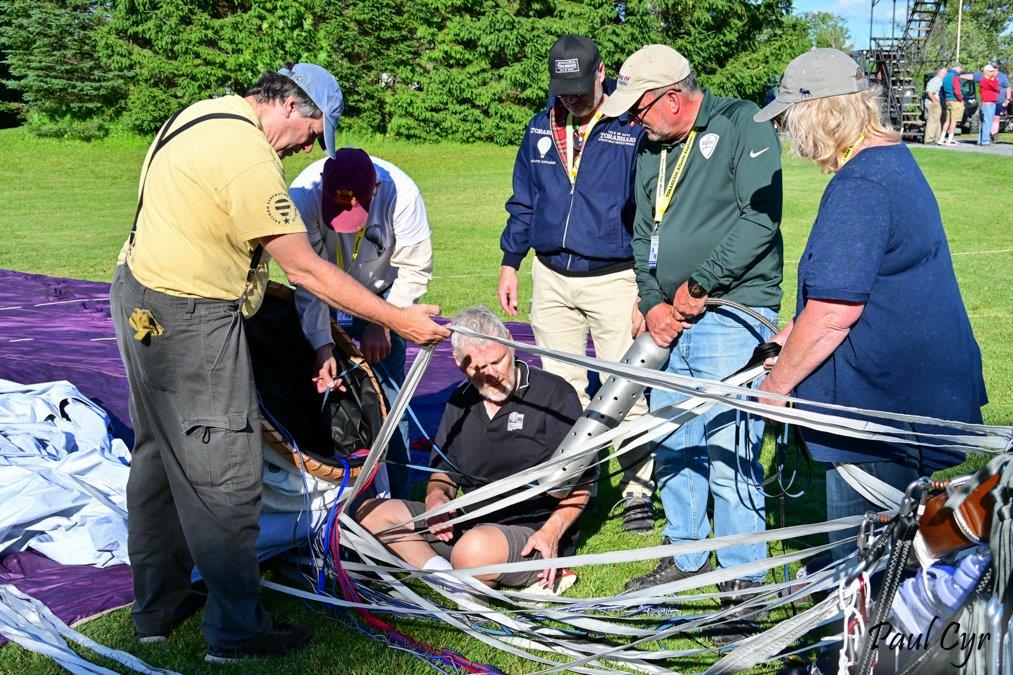
This year preparations resumed in May 2024, but weather forecasts continued to fluctuate rapidly. Two weeks before their June 28th launch, David and his team flew to Presque Isle on June 15th for a potential launch on 16th night or 17th morning. However, soon after they boarded the flight, they received an email from Wim, marking 17th as “red” for takeoff.
Bert believes flying higher in the jet stream makes crossing the Atlantic by balloon easier and quicker than at lower altitudes, where weather challenges are more common. Despite the difficulties, he remains committed to the dream. “It’s all doable. Maybe next year, and if Torabhaig continues to sponsor us, the weather will be kind and favorable to us”, he hopes.
“The success I’ve had in ballooning has not come without failures,” says Bert. “And this failure was seen by a lot of people. I call it a failure because we didn’t make it across, but it’s not a failure in the sense that all equipment operated smoothly and is intact, the balloon’s design is sound, and it flew beautifully, and all participants are safe. So, if you want to call it a test flight, it was very successful.”
Moreover, “those six hours in the air were the happiest six hours of my life,” he adds. These hours were intensely personal, a time for reflection on his childhood dreams of flight. “As a young kid, I would fantasize, closing my eyes and imagining what it must be like to take off and spend the first night in a balloon flying across Canada.” For him, those six hours were about living in the moment, fully embracing and enjoying every minute of his long-anticipated experience.
In a blog post on the Torabhaig Atlantic Explorer Diary 2024, written a week after their flight, David reflects, “The weather we would have encountered at the proposed time of landing looks horrendous. Even if we had made landfall, which is doubtful, it certainly wouldn’t have been a stand-up landing for sure. For me, this reconfirms that we made the right decision.”
In a contemplative tone, Sir David Hempleman-Adams captures the essence of their endeavor, acknowledging that the dream transcends the pilots themselves.
This article features quotes and content from an interview with Bert Padelt and the Torabhaig Atlantic Explorer Diary 2024, used with permission from Sarah Belizaire-Butler.
Feature photo credit: Paul Cyr
###

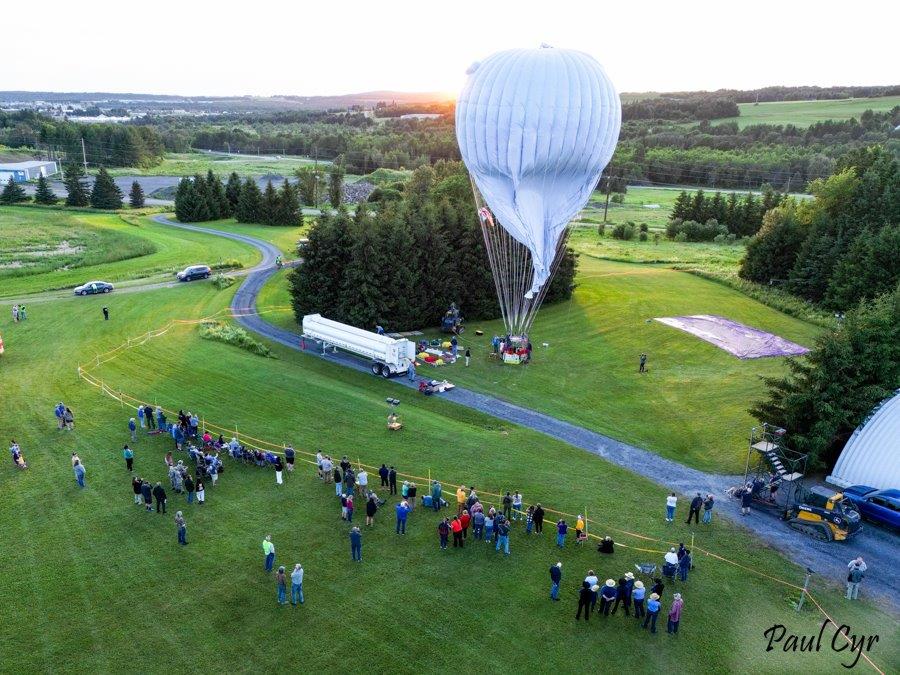
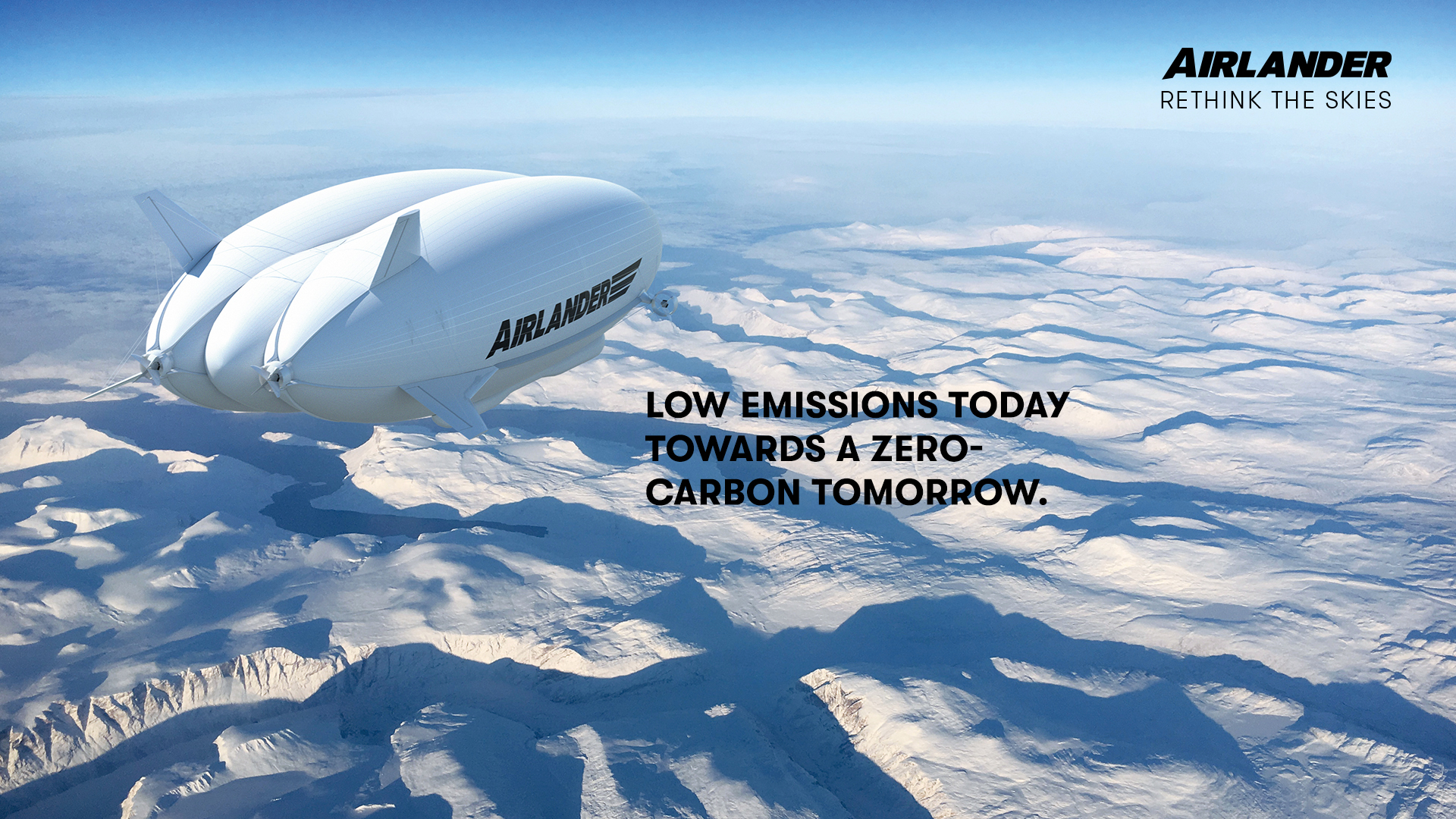
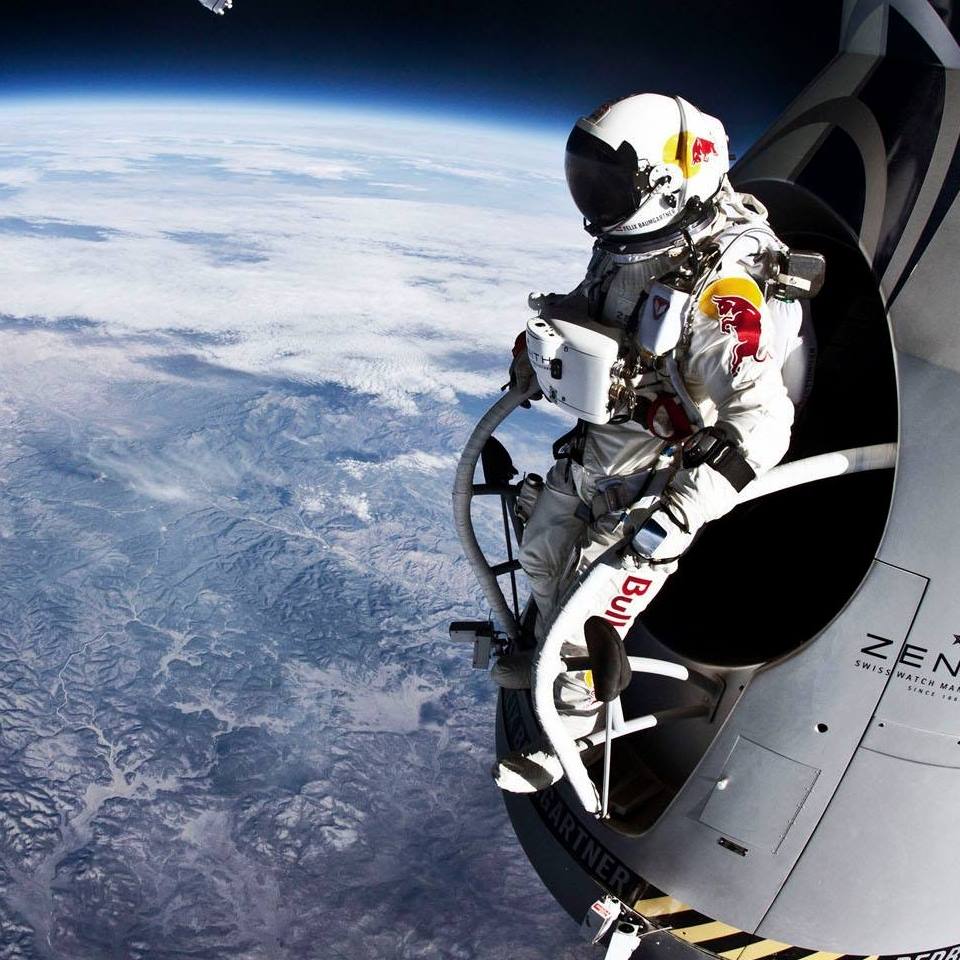
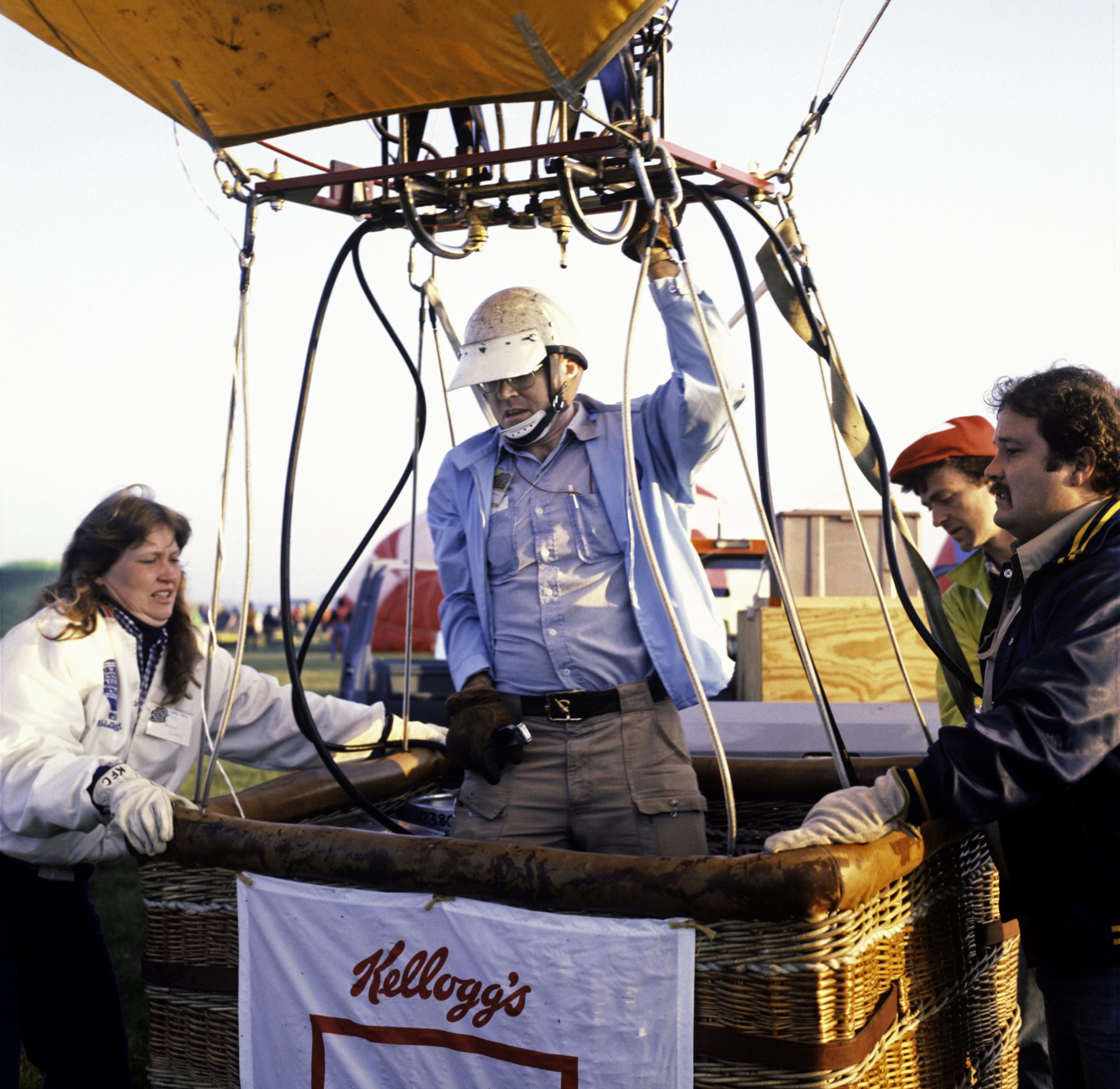
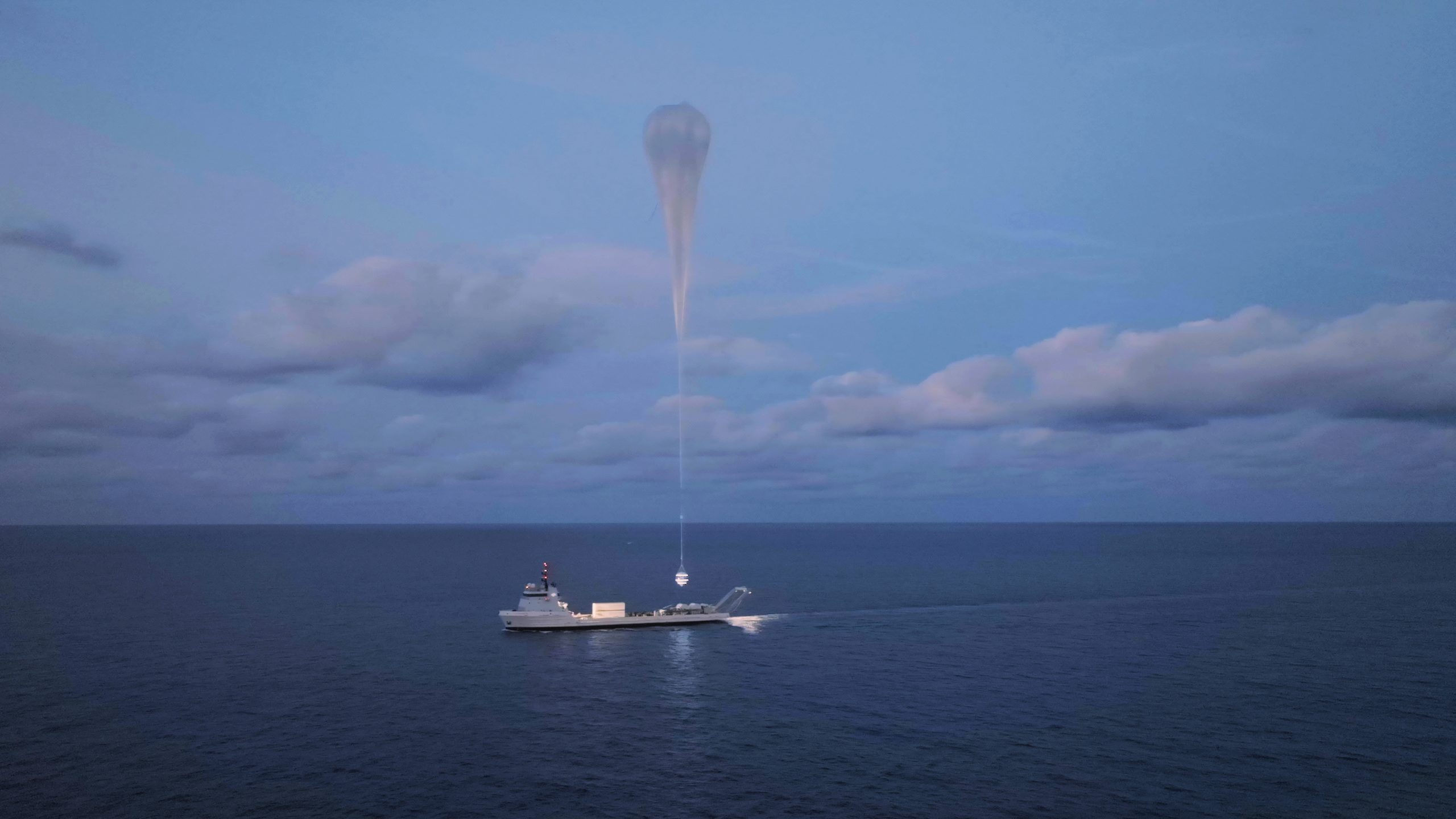

One Response
Fantastic description of the “test flight!”
Superb planning, execution and a very wise decision made by the team together. Wonderful photos by Paul Cyr allowed us all to be there from the comfort of our homes.
Bravo to all involved and I pray that you can make another attempt!
Gods speed!